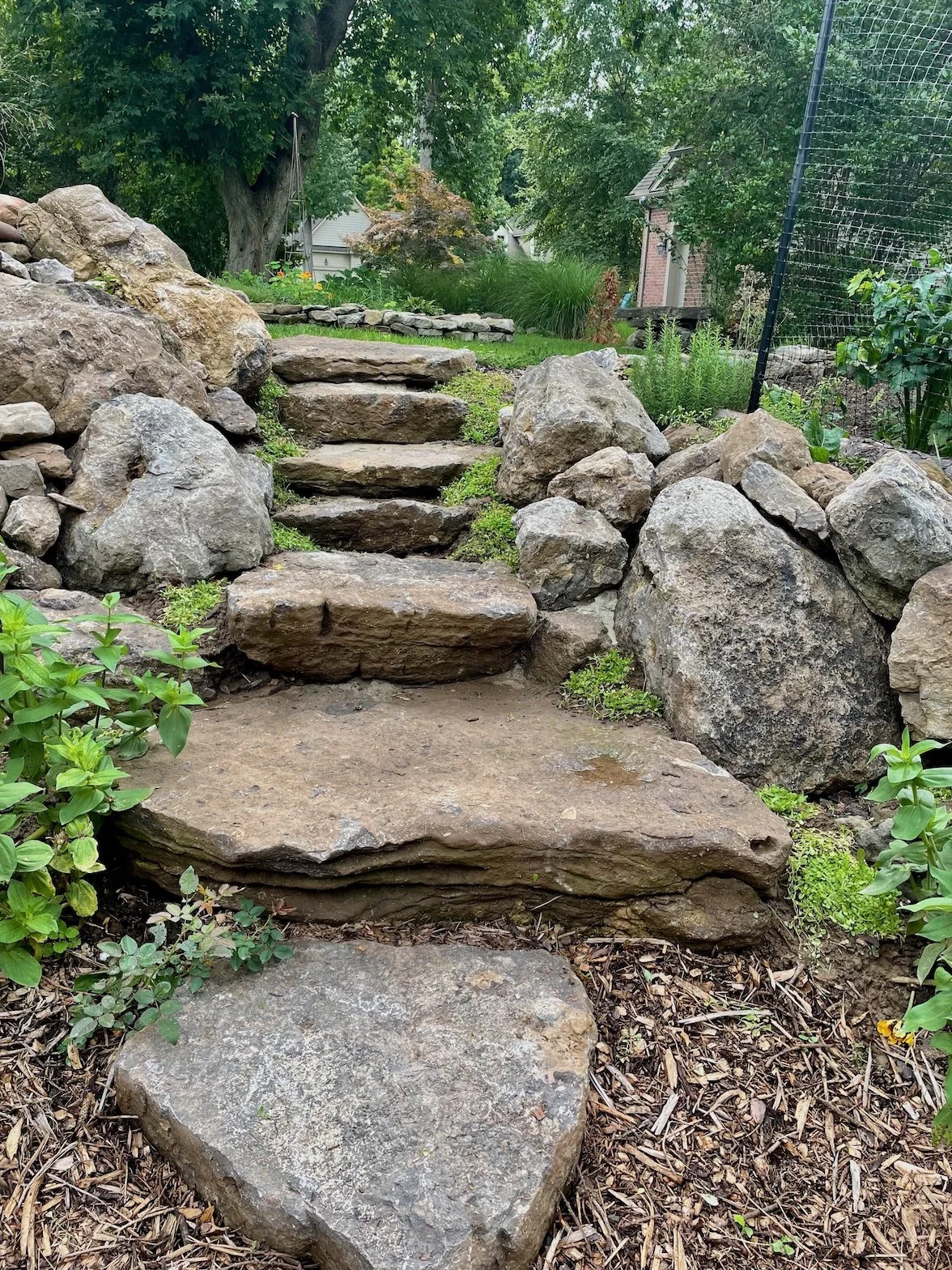Shifting perspective: Transforming the back forty into a magical spot
Over the summer, I revisited a garden I’d played a small part in the previous spring. My role had been modest—I helped the owners create enclosure around their pool by installing an arborvitae hedge and offering a few design suggestions. But what they did afterward stopped me in my tracks.
What struck me most wasn’t just its beauty, but how they changed the entire viewpoint of the property by reclaiming a section that was previously overlooked. Truly great gardens are often the result of creative problem solving and seeing what you have through a different lens.
The goal was to expand the use of the property. Catherine Fuller and her husband Robert Salmon cleared out weeds and invasive honeysuckle, installed stairs, walls and a pathway to travel through the garden. The garden was Catherine’s vision. Her background in design and four years of experience as Horticulture Chairman for the Rochester Garden Club helped her to tackle what looked like a daunting project. Reflecting on the transformation, she says, “I was truly excited to create a new garden out of a previously unruly and undeveloped part of our property. As I considered the possibilities, strategies and goals for the garden composition, a plan emerged.”
Before and after transformation.
Her thought process was governed by size, exposure, deer browsing and a desire to attract pollinators. She says, “the space was full of sun which allowed for many plant choices. It was large, so I needed to connect all the plantings to keep it cohesive and not appear random. I have many deer in the area, so I needed to keep the garden as resistant to deer as possible which made planting natives a good choice. I greatly enjoyed playing with color and wanted to instill vibrant colors that played off each other through the seasons.
To create cohesiveness and structure, I started with the stone steps and winding path through the garden. Then with Christine’s insight we installed trees and shrubs, all natives apart from hydrangeas. I worked back to front with taller plants gradually going forward with plants that accented the stone path. I didn’t strictly follow this high to low strategy though and added some “statuesque” plants like the ‘Rudbeckia Maxima’ to add interest. Cohesiveness was also achieved by adding ‘connectors’ such as the carex’s between the flowering plants.
I then worked to achieve color and texture combinations. The blue of the Little Blue Stem and the yellow of the Euphorbia with Baptisia floating behind is one of my favorite vignettes.
Early summer colors tend to be softer, pastel tones, as the season progresses the colors become more jewel-toned and vibrant. I will admit I didn’t plan it to be that way but that’s what happened.”
Unplanned surprises are the best part of gardening aren’t they? I’d love to hear about some of your unintended successes!
Here is list of the key plants used in the garden:
Ground covers between stones:
· Mazus Reptans
· Thyme and Woolly thyme (preferred)
· Species tulips
Grasses:
· Calamagrostis ‘Karl Foerster’
· Schizachrium (Litle Bluestem )
· Carex Plantaginea
· Carex ‘Flacca’
Herbaceous Perennials:
· Helenium
· Penstemon
· Amsonia ‘Blue Ice’ and ‘Hubrichtii’
· Summer Phlox (not deer resistant, 3 cultivars)
· Euphorbia
· Verbena bonariensis
· Kniphofia (white)
· Russian sage
· Salvia
· Coreopsis
· Echinacea (not deer resistant)
· Agastache ‘Summer Breeze’
· Alium ‘Millenium’
· Stachys ‘Hummelo’
· Rudbeckia maxima
· Baptisia
· Hemerocallis (many cultivars, not deer resistant)
Trees and Shrubs:
· Thuja plicata ‘Green Giant’ (Arborvitae)
· Amelanchier (Serviceberry)
· Clethra (Sweet Spire)
· Myrica pennsylvanica (Bayberry)
· Physocarpus opuifolius (Nine Bark)
· Hydrangea paniculata ‘Fire and Ice’ (not deer resistant)
· Ilex verticillata (Winter Berry)
· Cornus ‘Ivory Halo’


